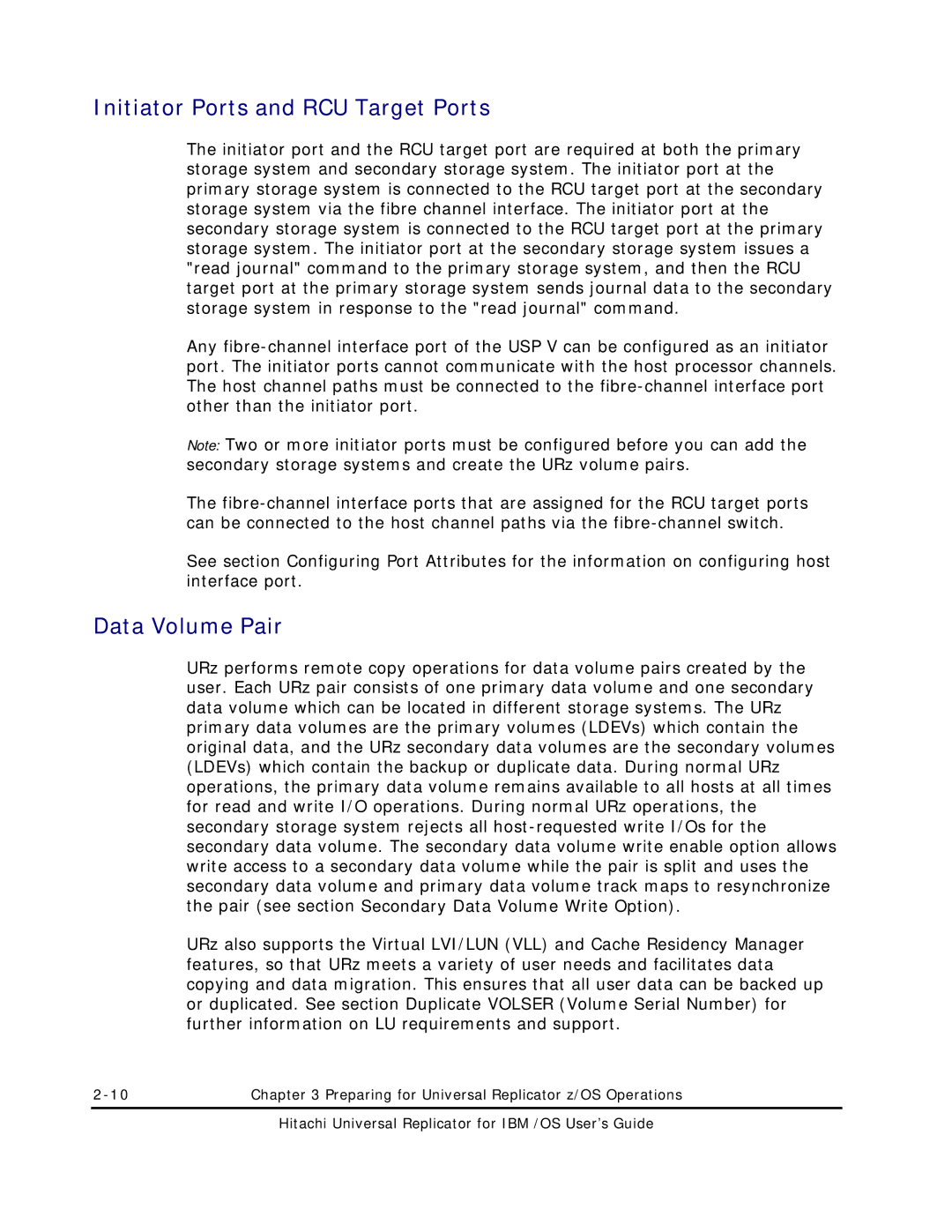Initiator Ports and RCU Target Ports
The initiator port and the RCU target port are required at both the primary storage system and secondary storage system. The initiator port at the primary storage system is connected to the RCU target port at the secondary storage system via the fibre channel interface. The initiator port at the secondary storage system is connected to the RCU target port at the primary storage system. The initiator port at the secondary storage system issues a "read journal" command to the primary storage system, and then the RCU target port at the primary storage system sends journal data to the secondary storage system in response to the "read journal" command.
Any
Note: Two or more initiator ports must be configured before you can add the secondary storage systems and create the URz volume pairs.
The
See section Configuring Port Attributes for the information on configuring host interface port.
Data Volume Pair
URz performs remote copy operations for data volume pairs created by the user. Each URz pair consists of one primary data volume and one secondary data volume which can be located in different storage systems. The URz primary data volumes are the primary volumes (LDEVs) which contain the original data, and the URz secondary data volumes are the secondary volumes (LDEVs) which contain the backup or duplicate data. During normal URz operations, the primary data volume remains available to all hosts at all times for read and write I/O operations. During normal URz operations, the secondary storage system rejects all
URz also supports the Virtual LVI/LUN (VLL) and Cache Residency Manager features, so that URz meets a variety of user needs and facilitates data copying and data migration. This ensures that all user data can be backed up or duplicated. See section Duplicate VOLSER (Volume Serial Number) for further information on LU requirements and support.
Chapter 3 Preparing for Universal Replicator z/OS Operations |
